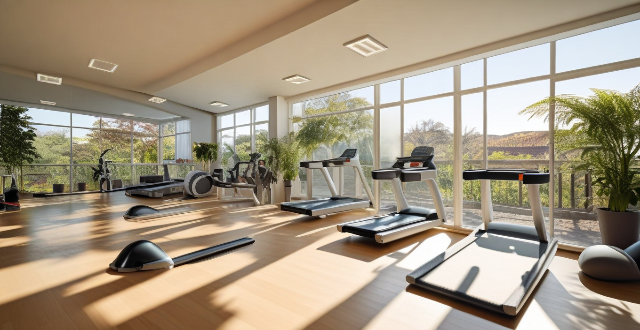Exercise physiology explores the interaction between genetic factors and environmental influences like exercise, nutrition, and sleep to explain variations in fitness levels among individuals. It examines how muscle fiber composition, cardiovascular efficiency, metabolic rate, and body composition affect one's ability to perform physical activities. While genetic background sets a baseline for fitness potential, lifestyle choices significantly impact an individual's actual fitness outcomes. By understanding these principles, individuals can optimize their fitness through targeted exercise training, proper nutrition, and adequate rest.

Exercise Physiology and Genetic Backgrounds
Introduction
Exercise physiology is the study of how the body responds to physical activity. It explains the differences in fitness levels among individuals with different genetic backgrounds by examining the interaction between genes and environmental factors such as exercise.
Genetic Factors Affecting Fitness Levels
1. Muscle Fiber Type Composition
- Slow-twitch fibers (Type I) are responsible for endurance activities and have a higher capacity for oxygen uptake and use.
- Fast-twitch fibers (Type II) are more suited for short, high-intensity bursts of power and have a lower capacity for oxygen uptake and use.
- The distribution of these fiber types varies among individuals, affecting their ability to perform certain types of exercises.
2. Cardiovascular System
- Some people may be genetically predisposed to having a larger heart or more efficient cardiovascular system, allowing them to deliver more oxygen and nutrients to their muscles during exercise.
- This can result in better endurance and overall fitness levels.
3. Metabolic Rate
- Genetics plays a role in determining an individual's resting metabolic rate (RMR), which affects their energy expenditure at rest and during exercise.
- A higher RMR means that an individual burns more calories even when not exercising, potentially leading to better weight management and overall fitness.
4. Body Composition
- Genetics influences body composition, including muscle mass and fat distribution.
- People with a higher percentage of lean muscle mass tend to have better fitness levels due to increased strength and endurance.
Environmental Factors Affecting Fitness Levels
1. Exercise Training
- Regular exercise training can improve fitness levels by increasing muscle strength, endurance, and cardiovascular efficiency.
- The type and intensity of exercise performed can also influence fitness outcomes.
2. Nutrition
- Proper nutrition is essential for maintaining optimal fitness levels.
- Consuming a balanced diet with sufficient protein, carbohydrates, and healthy fats supports muscle growth, recovery, and energy production during exercise.
3. Sleep and Recovery
- Adequate sleep and recovery time are crucial for allowing the body to repair and rebuild after exercise.
- Lack of sleep or insufficient recovery can negatively impact fitness levels and performance.
Interaction Between Genetics and Environmental Factors
1. Epigenetics
- Epigenetic changes occur when environmental factors modify gene expression without altering the underlying DNA sequence.
- These changes can influence an individual's response to exercise and ultimately affect their fitness levels.
2. Genetic Predisposition vs. Environmental Influence
- While genetics plays a role in determining an individual's potential for fitness, environmental factors such as exercise training, nutrition, and sleep can significantly impact their actual fitness levels.
- By focusing on modifiable lifestyle factors, individuals can optimize their fitness potential regardless of their genetic background.
In conclusion, exercise physiology explains the differences in fitness levels among individuals with different genetic backgrounds by considering both genetic and environmental factors. While genetics sets the foundation for an individual's fitness potential, environmental factors such as exercise training, nutrition, and sleep play a crucial role in achieving optimal fitness levels.